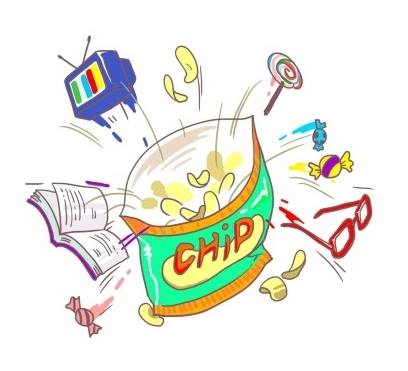The first semester of 2020 was quite different from what students had expected. Due to the prolonged COVID-19 crisis, face-to-face lectures were not available for this semester. Accordingly, the CAH has also made efforts to reach out to students of Chung-Ang University, even online. One way we did this was through “Card News”. Our normal monthly magazine published by the CAH contains articles with in-depth stories, including this article. On the other hand, the Card News, which can be found on the Facebook page of the CAH, has only the title and a brief article introduction. The Card News is a typical example of snack culture. Let's find out with CAH about the snack culture that has already become part of the mainstream!
Enchanted by the Short and Strong Things

Snack culture, which refers to something that can be enjoyed in a short time like snacks, has been targeting young people who have become accustomed to speedy things. This began with the popularization of smartphones. According to a survey of 27 countries conducted by Pew Research in 2018, South Korea has the highest smartphone penetration rate. People have come to find short content that can be viewed on their smartphones while using public transportation or waiting for their friends at cafes. In fact, according to the ‘Report on Media Usage Behavior by Age’ conducted by Mezzo Media, the majority of teenagers who are familiar with smartphones said they prefer short videos of around 10 minutes or less, with 11% responding that they prefer 5 minutes of video, 67% prefer 5 to 10 minutes of video.
More Diversified Online Snack Culture Content
Short, Shorter!

The tendency to prefer short things has almost become a culture in itself. In Korea, snack culture content has accelerated its development, focusing on webtoons. (More detailed information of this topic can be found in Herald 556 Reporter's Pick.) It soon expanded its influence on web novels and web dramas. Unlike traditional television dramas, which take 60 to 70 minutes per episode, web dramas which can be watched in about 10 minutes have been gaining popularity from the Millennials and Generation Z. Similarly, Web novels are able to be quickly consumed in about 3 to 5 minutes while it takes a long time to read other ordinary novels. Recently, those two fields have been building their own areas more firmly with their platform establishment, even producing original content. Their B-content approaches people more naturally than the A-content, which is more well-organized and has higher quality.

The Chinese video application ‘TikTok’ has appeared for those who consider even five minutes too long. It is a service that allows users to take 15 second-long videos and share them with their friends. The big advantage is that it can be edited quickly and easily to suit today’s snack culture. "These days, teenagers enjoy creating their own content and communicating with others," said Lee Seung-yoon, a professor of business administration at Konkuk University. "Unlike YouTube, which requires more professional editing of its videos, TikTok is preferred by young people as it is easy to edit and provides rich video sources." Thanks to this, TikTok is now used in more than 150 countries.
People Who Are Used to Seeing Rather Than Reading
In addition to the entertainment content, snack culture has led to changes in information-providing content such as news. In information gathering, modern people have no choice but to live with an overflow of information. This led to the emergence of curated-type content that collects real-time issues and information. As mentioned earlier, Card News is one of the examples. Card News is a form of news that creates a story by combining pictures and writings or videos. In particular, it has been developed in line with the way people are flipping through the images sequentially on social media. Instead of reading the newspaper for a long time, they simply skip through each cut of Card News for a few minutes. It is easier to understand than a lengthy article. The Card News is currently used not only by the press but also by many other companies for publicity and campaigns.
Snacks Cannot Be a Meal
Snack culture is delicious for modern people who have been used to audiovisual stimulation. However, the snack culture is much more stimulating as it needs to capture the users’ attention in a short period of time. In other words, a snack is just a snack, and it cannot be a meal. In Indonesia, a petition was filed to ban teenagers from wearing indecent clothes and recording videos on TikTok. As a result, Indonesian authorities have actually imposed a ban on TikTok. In addition, Card News also has the limitation of providing only fragments of information. If you consume only Card News without reading the original article, you will only acquire fragmentary information without true substance. In addition, many readers of Card News are often confused on whether what they are reading is news or advertising.
Snack culture is not limited to being online. It has been incorporated offline as well, with things like convenience store lunch boxes and fast fashion. In other words, snack culture is now a feature of modern society. We now prefer to taste shallow but varied content rather than content of great wisdom and depth. This led you to have information about many various fields. But fragmentary information alone cannot build your knowledge. Therefore, modern society needs to pursue in-depth content rather than light content. For example, EBS's ‘Knowledge Channel-e’ is short in length, but the topics it deals with are deep. The subjects range from recent issues to academic fields. It also plays a role in inducing viewers with original information, citing the source of the data at the end of each episode. CAH looks forward to the development of ‘healthy’ snacks that will overcome the problems and show new changes.

